Gemfibrozil, a lipid-lowering drug, upregulates IL-1 receptor antagonist in mouse cortical neurons: implications for neuronal self-defense
- PMID: 22706077
- PMCID: PMC3523125
- DOI: 10.4049/jimmunol.1102624
Gemfibrozil, a lipid-lowering drug, upregulates IL-1 receptor antagonist in mouse cortical neurons: implications for neuronal self-defense
Abstract
Chronic inflammation is becoming a hallmark of several neurodegenerative disorders and accordingly, IL-1β, a proinflammatory cytokine, is implicated in the pathogenesis of neurodegenerative diseases. Although IL-1β binds to its high-affinity receptor, IL-1R, and upregulates proinflammatory signaling pathways, IL-1R antagonist (IL-1Ra) adheres to the same receptor and inhibits proinflammatory cell signaling. Therefore, upregulation of IL-1Ra is considered important in attenuating inflammation. The present study underlines a novel application of gemfibrozil (gem), a Food and Drug Administration-approved lipid-lowering drug, in increasing the expression of IL-1Ra in primary mouse and human neurons. Gem alone induced an early and pronounced increase in the expression of IL-1Ra in primary mouse cortical neurons. Activation of type IA p110α PI3K and Akt by gem and abrogation of gem-induced upregulation of IL-1Ra by inhibitors of PI3K and Akt indicate a role of the PI3K-Akt pathway in the upregulation of IL-1Ra. Gem also induced the activation of CREB via the PI3K-Akt pathway, and small interfering RNA attenuation of CREB abolished the gem-mediated increase in IL-1Ra. Furthermore, gem was able to protect neurons from IL-1β insult. However, small interfering RNA knockdown of neuronal IL-1Ra abrogated the protective effect of gem against IL-1β, suggesting that this drug increases the defense mechanism of cortical neurons via upregulation of IL-1Ra. Taken together, these results highlight the importance of the PI3K-Akt-CREB pathway in mediating gem-induced upregulation of IL-1Ra in neurons and suggest gem as a possible therapeutic treatment for propagating neuronal self-defense in neuroinflammatory and neurodegenerative disorders.
Figures
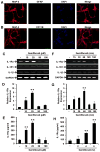

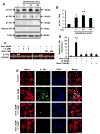
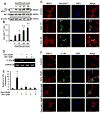
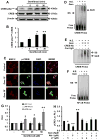
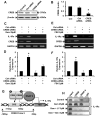
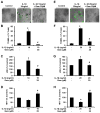
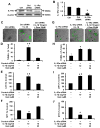
Similar articles
-
Gemfibrozil, food and drug administration-approved lipid-lowering drug, increases longevity in mouse model of late infantile neuronal ceroid lipofuscinosis.J Neurochem. 2017 May;141(3):423-435. doi: 10.1111/jnc.13987. Epub 2017 Apr 3. J Neurochem. 2017. PMID: 28199020 Free PMC article.
-
Gemfibrozil, a lipid-lowering drug, induces suppressor of cytokine signaling 3 in glial cells: implications for neurodegenerative disorders.J Biol Chem. 2012 Aug 3;287(32):27189-203. doi: 10.1074/jbc.M112.346932. Epub 2012 Jun 8. J Biol Chem. 2012. PMID: 22685291 Free PMC article.
-
Interleukin-1beta interferes with signal transduction induced by neurotrophin-3 in cortical neurons.Brain Res. 2008 Jan 10;1188:189-97. doi: 10.1016/j.brainres.2007.10.051. Epub 2007 Oct 26. Brain Res. 2008. PMID: 18036576 Free PMC article.
-
IL-1 receptor antagonist ameliorates inflammasome-dependent alcoholic steatohepatitis in mice.J Clin Invest. 2012 Oct;122(10):3476-89. doi: 10.1172/JCI60777. Epub 2012 Sep 4. J Clin Invest. 2012. PMID: 22945633 Free PMC article. Review.
-
Neuroprotective effects of gemfibrozil in neurological disorders: Focus on inflammation and molecular mechanisms.CNS Neurosci Ther. 2024 Mar;30(3):e14473. doi: 10.1111/cns.14473. Epub 2023 Oct 30. CNS Neurosci Ther. 2024. PMID: 37904726 Free PMC article. Review.
Cited by
-
Cinnamon and Its Metabolite Sodium Benzoate Attenuate the Activation of p21rac and Protect Memory and Learning in an Animal Model of Alzheimer's Disease.PLoS One. 2015 Jun 23;10(6):e0130398. doi: 10.1371/journal.pone.0130398. eCollection 2015. PLoS One. 2015. PMID: 26102198 Free PMC article.
-
Ankyrin repeat and BTB/POZ domain containing protein-2 inhibits the aggregation of alpha-synuclein: implications for Parkinson's disease.FEBS Lett. 2013 Nov 1;587(21):3567-74. doi: 10.1016/j.febslet.2013.09.020. Epub 2013 Sep 25. FEBS Lett. 2013. PMID: 24076025 Free PMC article.
-
Novel Insights into the Role of UBE3A in Regulating Apoptosis and Proliferation.J Clin Med. 2020 May 22;9(5):1573. doi: 10.3390/jcm9051573. J Clin Med. 2020. PMID: 32455880 Free PMC article.
-
Up-regulation of neurotrophic factors by cinnamon and its metabolite sodium benzoate: therapeutic implications for neurodegenerative disorders.J Neuroimmune Pharmacol. 2013 Jun;8(3):739-55. doi: 10.1007/s11481-013-9447-7. Epub 2013 Mar 9. J Neuroimmune Pharmacol. 2013. PMID: 23475543 Free PMC article.
-
Repurposing of CNS accumulating drugs Gemfibrozil and Doxylamine for enhanced sensitization of glioblastoma cells through modulation of autophagy.Sci Rep. 2025 Jul 1;15(1):20560. doi: 10.1038/s41598-025-05054-5. Sci Rep. 2025. PMID: 40595852 Free PMC article.
References
-
- Alzheimer’s disease facts and figures. Alzheimer’s & dementia: the journal of the Alzheimer’s Association. 2011;7:208–244. - PubMed
-
- Martin JB. Molecular basis of the neurodegenerative disorders. N Engl J Med. 1999;340:1970–1980. - PubMed
-
- Cummings JL, Vinters HV, Cole GM, Khachaturian ZS. Alzheimer’s disease: etiologies, pathophysiology, cognitive reserve, and treatment opportunities. Neurology. 1998;51:S2–17. discussion S65–17. - PubMed
-
- Griffin WS, Sheng JG, Roberts GW, Mrak RE. Interleukin-1 expression in different plaque types in Alzheimer’s disease: significance in plaque evolution. J Neuropathol Exp Neurol. 1995;54:276–281. - PubMed
Publication types
MeSH terms
Substances
Grants and funding
LinkOut - more resources
Full Text Sources
Other Literature Sources
Medical
Molecular Biology Databases
Research Materials

